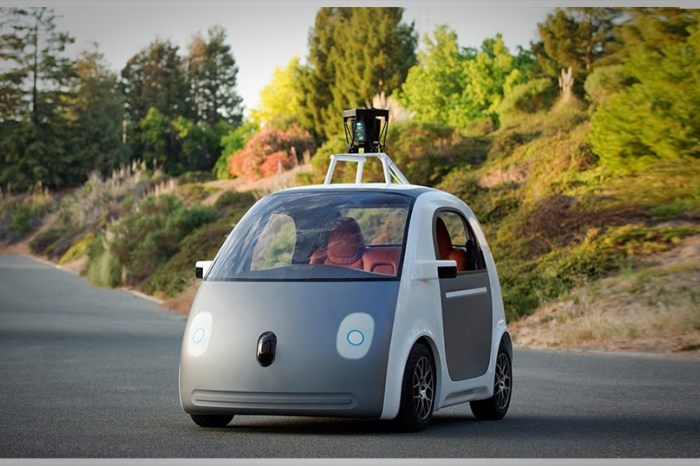Automotive Technology
The Evolution of Smart Cars Autonomous Driving in 2025: A Glimpse into the Future

Exploring the advancements in smart cars and autonomous driving set to revolutionize the automotive landscape by 2025. This introduction sets the stage for an informative and captivating journey through the realm of futuristic transportation, blending innovation and technology seamlessly.
Providing insights into the technological breakthroughs and societal impact awaiting us just around the corner.
Evolution of Smart Cars in 2025

Smart cars in 2025 are expected to showcase significant technological advancements that will revolutionize the automotive industry. These advancements will not only enhance the driving experience but also prioritize safety, efficiency, and sustainability.Smart cars equipped with advanced Artificial Intelligence (AI) systems will be able to make real-time decisions, analyze traffic patterns, and communicate with other vehicles on the road.
This will lead to improved traffic flow, reduced congestion, and ultimately, a safer driving environment for everyone on the road.One of the key features that will define smart cars in 2025 is autonomous driving capabilities. These vehicles will have the ability to navigate without human intervention, utilizing sensors, cameras, and AI algorithms to perceive their surroundings and make informed decisions.
This will not only reduce the risk of accidents but also provide a more relaxing and efficient driving experience for users.
Enhanced Connectivity and Communication
Smart cars in 2025 will be interconnected with each other and with the surrounding infrastructure, creating a seamless network of communication. This connectivity will enable vehicles to share real-time data on road conditions, weather updates, and potential hazards, allowing for more informed route planning and decision-making.
- Smart cars will be able to communicate with traffic lights, road signs, and other vehicles to optimize traffic flow and reduce commute times.
- Enhanced connectivity will also enable over-the-air software updates, ensuring that smart cars are always equipped with the latest features and security patches.
- Users will have the ability to remotely access and control certain functions of their smart cars, such as pre-heating the interior or monitoring battery levels, through smartphone apps.
Autonomous Driving Technology
The development of autonomous driving technology has made significant strides leading up to 2025. Automakers and tech companies have been investing heavily in research and development to bring fully autonomous vehicles to the market.
Levels of Autonomy
- Level 0: No Automation - The driver is in full control of the vehicle at all times.
- Level 1: Driver Assistance - The vehicle can assist with some driving tasks, such as steering or acceleration, but the driver must remain fully engaged.
- Level 2: Partial Automation - The vehicle can control both steering and acceleration/deceleration, but the driver must still monitor the environment and be ready to take over at any time.
- Level 3: Conditional Automation - The vehicle can handle most driving tasks in certain conditions, but the driver must be prepared to intervene when prompted.
- Level 4: High Automation - The vehicle is capable of performing all driving tasks under specific conditions or within a certain area, with no driver intervention required.
- Level 5: Full Automation - The vehicle can operate autonomously in all conditions and environments without any human input.
Challenges and Opportunities
- Challenges:
- Regulatory Hurdles: Laws and regulations need to catch up with the rapid advancements in autonomous driving technology to ensure safety and accountability.
- Cybersecurity Risks: With increased connectivity, autonomous vehicles are vulnerable to cyber attacks that could compromise safety and privacy.
- Public Acceptance: Building trust and acceptance among consumers for autonomous vehicles remains a challenge, especially after high-profile accidents involving self-driving cars.
- Opportunities:
- Safety Improvements: Autonomous driving technology has the potential to significantly reduce accidents caused by human error, making roads safer for everyone.
- Efficiency and Convenience: Self-driving cars can optimize traffic flow, reduce congestion, and provide a more convenient transportation experience for users.
- Environmental Benefits: Autonomous vehicles can be more energy-efficient and environmentally friendly, contributing to sustainability efforts.
Safety and Regulations
Autonomous driving technology in 2025 comes with a range of safety measures to ensure the well-being of passengers and other road users. These measures are crucial in gaining public trust and acceptance of self-driving vehicles.
Safety Measures in Autonomous Vehicles
- Advanced Sensor Systems: Autonomous vehicles are equipped with a variety of sensors, such as LiDAR, radar, and cameras, to detect and respond to their surroundings in real-time.
- Redundant Systems: To prevent system failures, autonomous vehicles often have redundant systems that can take over in case of any malfunctions.
- Constant Software Updates: Regular software updates are essential to address any potential security vulnerabilities and improve the overall functionality of autonomous driving systems.
- Emergency Protocols: Autonomous vehicles are programmed to respond to emergencies by safely pulling over, contacting emergency services, and ensuring the well-being of passengers.
Regulatory Landscape
- Government Oversight: Regulatory bodies are working to establish guidelines and standards for autonomous driving technology to ensure safety, security, and compliance with existing traffic laws.
- Testing and Certification: Autonomous vehicle manufacturers are required to undergo rigorous testing and certification processes to demonstrate the safety and reliability of their systems before they can be deployed on public roads.
- Data Privacy: Regulations are being put in place to protect the privacy of individuals' data collected by autonomous vehicles and ensure that it is used ethically and responsibly.
Ethical Considerations
- Decision-Making Algorithms: Autonomous vehicles must be programmed to make split-second decisions in potentially life-threatening situations, raising ethical questions about how these decisions are made and who is responsible for them.
- Liability Issues: Determining liability in accidents involving autonomous vehicles is a complex issue that requires careful consideration of the roles and responsibilities of manufacturers, programmers, and users.
- Social Impact: The widespread adoption of autonomous vehicles may have far-reaching social implications, such as changes in employment, urban planning, and accessibility, which must be carefully managed and addressed.
User Experience and Connectivity
The user experience in smart cars is set to undergo a significant transformation by 2025, with advancements in connectivity and IoT technologies playing a crucial role. The integration of AI will further enhance user interactions within smart vehicles, creating a more seamless and intuitive driving experience.
Integration of IoT and Connectivity Features
IoT and connectivity features in smart cars will enable a range of functionalities aimed at improving the overall user experience. These features will allow for real-time data sharing between vehicles, infrastructure, and other connected devices, enhancing communication and coordination on the road.
For example, smart cars will be able to communicate with traffic lights to optimize traffic flow, or automatically adjust speed based on road conditions and surrounding vehicles.
Impact of AI on User Interactions
AI will revolutionize how users interact with smart cars, making the driving experience more personalized and intuitive. Through AI-powered voice assistants and gesture controls, users will be able to control various functions of the car without taking their hands off the wheel or eyes off the road.
AI will also enable predictive maintenance notifications, personalized entertainment recommendations, and even mood-based ambient lighting adjustments to create a more comfortable and enjoyable driving experience.
Environmental Impact
Smart cars and autonomous driving technology have significant environmental benefits, particularly in reducing carbon emissions and promoting sustainability.
Reducing Carbon Emissions
Smart cars contribute to reducing carbon emissions through various mechanisms. By optimizing routes and driving patterns, autonomous vehicles can minimize fuel consumption and emissions. Additionally, the use of electric and hybrid smart cars further reduces greenhouse gas emissions compared to traditional gasoline-powered vehicles.
The overall efficiency of smart cars in terms of energy consumption and emissions makes them a key player in combating climate change.
Sustainability Aspects
Autonomous driving technology also brings sustainability aspects to the forefront. By promoting shared mobility services and reducing the overall number of vehicles on the road, smart cars help decrease traffic congestion and lower emissions. Moreover, the development of autonomous electric vehicles powered by renewable energy sources contributes to a cleaner and more sustainable transportation ecosystem.
These advancements not only benefit the environment but also pave the way for a more sustainable future for transportation.
Epilogue
In conclusion, the evolution of smart cars and autonomous driving in 2025 promises a future where convenience, safety, and sustainability converge in a harmonious symphony of progress. Dive into this transformative era with optimism and curiosity as we pave the way for a new era of transportation.
Query Resolution
What are the expected safety measures in autonomous vehicles by 2025?
The safety measures in autonomous vehicles by 2025 are projected to include advanced sensors, real-time data analysis, and AI-driven accident prevention systems.
How do smart cars contribute to reducing carbon emissions?
Smart cars reduce carbon emissions through their efficient electric or hybrid engines, promoting eco-friendly driving practices and reducing overall fuel consumption.
What is the significance of integrating IoT in smart vehicles?
Integrating IoT in smart vehicles enhances connectivity, enabling seamless communication between the vehicle, its surroundings, and external systems for optimized performance and user experience.
-

 General6 months ago
General6 months agoSmall Home Renovation Ideas: 5 Creative Ways to Maximize Space
-

 General8 months ago
General8 months agoAI-powered lifestyle design tools for home planning: Revolutionizing Efficiency and Customization
-

 General8 months ago
General8 months agoCaptivating Title: Interior and Exterior Design Ideas for Wellness Retreats
-

 General6 months ago
General6 months agoCaptivating Fire Pit Patio Design Ideas to Transform Your Outdoor Space
-

 General6 months ago
General6 months agoThe Ultimate Guide to the Best Architectural Rendering Services for High-End Real Estate
-

 General7 months ago
General7 months agoEco-Friendly House Paint Options: A Guide to Sustainable Painting Choices
-

 General7 months ago
General7 months agoCrafting Energy Efficient Home Exteriors: A Guide to Sustainability
-

 General7 months ago
General7 months agoCrafting a Timeless Aura: Unveiling the Magic of Scandinavian Interior Design





